Retrospective of Bubsy 3D
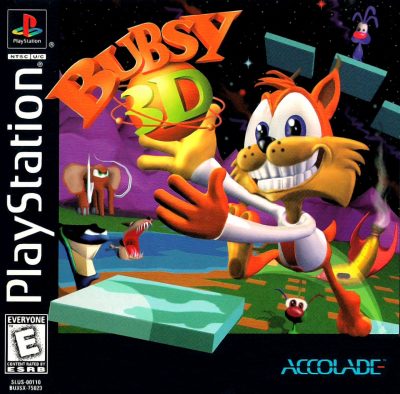 “Playing Bubsy 3D feels like watching Forrest Gump, except every time Forrest Gump says ‘momma,’ Stone Cold Steve Austin punches you in the stomach.” – Noah’s Game Reviews
“Playing Bubsy 3D feels like watching Forrest Gump, except every time Forrest Gump says ‘momma,’ Stone Cold Steve Austin punches you in the stomach.” – Noah’s Game Reviews
By Patrick S. Baker
Bubsy 3D also known as Bubsy 3D: Furbitten Planet, or Bubsy is 3D in Furbitten Planet was released in 1996 and enjoys a singular place in video game history. The game was one of the earliest attempts to bring a favorite 2D platforming character into the world of 3D gaming. As such, Bubsy 3D sought to push boundaries and capture the imagination of players.
The first three Busby games were innovative and successful. Busby: The Adventure Begins introduced players to the charismatic hero, Busby the Bobcat, and offered challenging platforming gameplay in vibrant worlds. The second installment, Busby’s Quest: The Enchanted Kingdom, took players on a mystical journey filled with puzzles, mazes, and magical encounters.
Finally, there was Busby’s Galactic Adventure which expanded the series into space, providing players with thrilling spaceship piloting, cosmic exploration, and encounters with extraterrestrial beings. These games combined engaging game play mechanics, visually appealing environments, and a sense of adventure. Each installment brought new challenges and expanded the Busby universe.
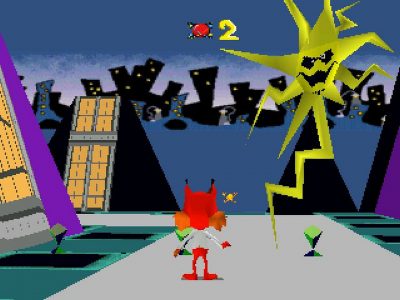
The success of the franchise finally led to the awfulness that was Busby 3D.
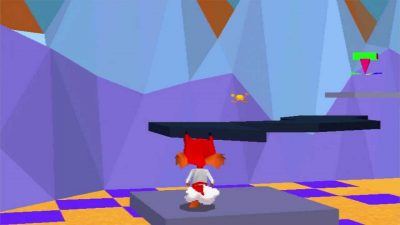 Bubsy 3D was developed by Eidetic Inc., later reorganized as Sony Interactive Studios America, and published by Accolade for the Sony PlayStation. The game was a departure from the previous side-scrolling Bubsy titles and sought to capitalize on the growing popularity of 3D platformers. Eidetic aimed to create an engaging and visually impressive experience, stating: “We want Bubsy 3D to be a milestone in 3D gaming.” The development team faced various technical challenges during development, including hardware limitations and the learning curve of working with 3D graphics.
Bubsy 3D was developed by Eidetic Inc., later reorganized as Sony Interactive Studios America, and published by Accolade for the Sony PlayStation. The game was a departure from the previous side-scrolling Bubsy titles and sought to capitalize on the growing popularity of 3D platformers. Eidetic aimed to create an engaging and visually impressive experience, stating: “We want Bubsy 3D to be a milestone in 3D gaming.” The development team faced various technical challenges during development, including hardware limitations and the learning curve of working with 3D graphics.
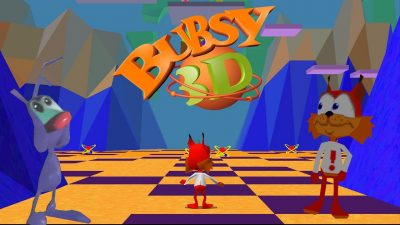 Upon its release, Bubsy 3D received mixed to negative reviews from critics. Many praised the game’s ambition, but at the same time pointed out the game’s serious flaws. The overall reaction was best summarized by the GameSpot‘s review, which says, “Bubsy 3D is a textbook example of how not to translate a successful 2D franchise into the third dimension.”
Upon its release, Bubsy 3D received mixed to negative reviews from critics. Many praised the game’s ambition, but at the same time pointed out the game’s serious flaws. The overall reaction was best summarized by the GameSpot‘s review, which says, “Bubsy 3D is a textbook example of how not to translate a successful 2D franchise into the third dimension.”
Most critics complained about the game’s camera system, imprecise controls, repetitive level design, and uninspiring visuals. One review noted, “The camera is so irritatingly placed that it detracts from the already tedious gameplay.” The game’s “floaty” controls and frustrating mechanics also contributed to its negative reception.
Despite the poor critical response, Bubsy 3D actually sold reasonably well in its initial release. According to reports, the game sold about 500,000 copies worldwide in the first year of release. However, it fell far short of the commercial success achieved by other platformers of the time, such as Super Mario 64 and Crash Bandicoot.
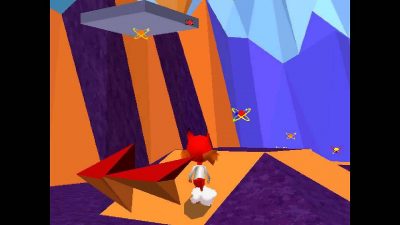 Still, Bubsy 3D’s legacy extends beyond its initial release, leaving a lasting impression on the gaming industry and subsequent 3D platformers. The game’s obvious flaws and negative critical reception acted as a warning for future developers looking to change their beloved 2D franchises to 3D.
Still, Bubsy 3D’s legacy extends beyond its initial release, leaving a lasting impression on the gaming industry and subsequent 3D platformers. The game’s obvious flaws and negative critical reception acted as a warning for future developers looking to change their beloved 2D franchises to 3D.
Further, Bubsy 3D became a symbol of the challenges faced by developers when transitioning from 2D to 3D gaming. Taking heed to the aphorism that people learn more from failure than from success, the game stands as a warning of the importance of careful planning, polishing mechanics, and having a deep understanding of the potential of 3D gaming.
Ultimately Bubsy 3D flopped critically and commercially. Still, it played a noteworthy role in the evolution of video games.
Patrick S. Baker is a former US Army Field Artillery officer and retired Department of Defense employee. He has degrees in History, Political Science, and Education. He has been writing history, game reviews, and science-fiction professionally since 2013. Some of his other work can be found at Sirius Science Fiction, Sci-Phi Journal, Armchair General, and Historynet.com.
Sources:
GameFan (1996). “An interview with: Eidetic on Bubsy is 3D in “Furbitten Planet”.
GameFan (1997) “Review: Bubsy 3D”
GameSpot (1996). “Bubsy 3D Review.”
Game Revolution (1996). “Bubsy 3D Review.”
IGN (2012) “From Syphon Filter to Uncharted: Sony Bend’s Story”
Noah’s Game Reviews (2020) “Bubsy 3D Review – Through the Years 1996”
